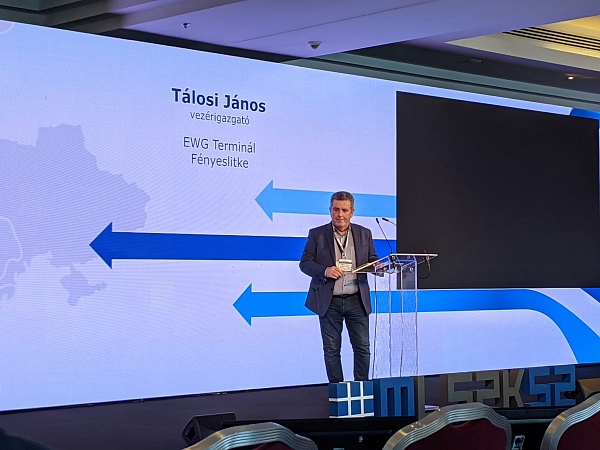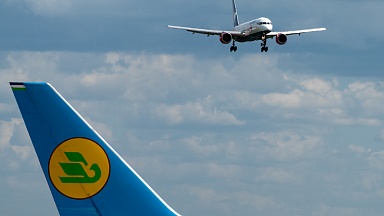The East West Gate terminal currently constructed in Fényeslitke is a flagship project in the area bordering Ukraine. As soon as April next year, the first trains will run through this terminal, which will be automated with 5G technology and have all the modern equipment one thinks of when saying state of the art.
Although a private project, the terminal was labelled ‘flagship’ by the Hungarian Deputy Minister of Foreign Affairs and Trade, in his opening speech at the Intermodal conference in Budapest yesterday. This is generally considered to be so because the Záhony border crossing so far has not done much to put Hungary on the map. “It needs to be replenished”, said Magyar Levente.
Once a busy border
A bit of background. Záhony is the border point on the Hungarian side with Ukraine. It was once a lively border crossing with high rail freight volumes, but this has all changed in the 1990s after the political transformation, as was explained by the politician. Since then, the facilities have been neglected. Although there has been attention for the Eurasian route via Ukraine, the more preferred transit country has been Slovakia.
This has been to the frustration of the Hungarian rail freight industry, which has been eager to tap into the potential of Hungary as a transit country. This frustration has been heard, for example by investors such as János Tálosi, the CEO of East West Gate. But in general, there seems to be a new willingness to ‘replenish’ the area.
Port of ZahonyThe Port of Záhony is envisioning a modernisation project. “We need more moderinised equipment, the market has got ahead of us”, said Gubik László, CEO of the transhipment terminal. Apart from equipment, it wants to digitalise its processes and it is working with the authorities to improve the customs procedures.
Also here, there is plenty of room for growth. Although the terminal has a capacity of 4 million tonnes per year, it is currently handling 2.1 million tonnes of goods. With the reorganisation of the entire transhipment area, the port of Záhony wants to create an industrial park, explained the CEO.
Silk Road gate
According to Tálosi, there is not much overlap between the East West Gate terminal in Fényeslitke and the port of Záhony. Whereas the former is focusing on container traffic, the latter has a strong bulk profile. The port of Záhony may have been there for many years, the East West Gate is a green field project born from demand, as there is “a clear need for an alternative route between Europe and China”, the CEO points out.
János Tálosi at the Intermodal Conference in Budapest East West Gate has an anticipated capacity of 1 million TEUs once the railway network of Hungary has been upgraded. One of the main advantages is that it facilitates both wide and normal gauge railway tracks. The terminal’s wide gauge service is provided on the Chop-Záhony-Komoró route. Normal gauge service is provided directly by the Fényeslitke train station, served by a new railway line.
Is the demand really there?
Judging from current developments, one can safely conclude that state and private investors are on the same page about the need to replenish the border area. But eventually, it is up to the market to make use of the route via Ukraine and Hungary.
Currently, the route via Ukraine in general is accounting for only a very small portion of the total rail freight volumes between Europe and Asia. In the first nine months of 2021, the route accounted for 2 per cent of the total, noting that only Kaliningrad performed better as an alternative route; the bulk is still directed via Malaszewice-Brest.
At the same time, this 2 per cent is more than what it was in the year before. The volumes are growing, said also László, specifically because of the rise of container traffic from China. Whereas the port handled 42 containers in 2017 as a whole, it transhipped close to 4,000 containers this year already.
Price arrangements
There are still some challenges when it comes to the transit route via Ukraine,, admits Tálosi, For example, the route is quite costly. But, East West Gate is negotiating on some price arrangements at the moment. “We will also provide Ukraine with the knowledge and technology they need”, he said. “But if you mean political challenges, these are not really there. Trains run through the country without any issues.”
If you ask him, it will not be long before the terminal welcomes thousands of containers from across both sides of the Eurasian corridor. “And this is not just a plan. The terminal will be done by the end of the year. This will place Hungary back on the map.”




